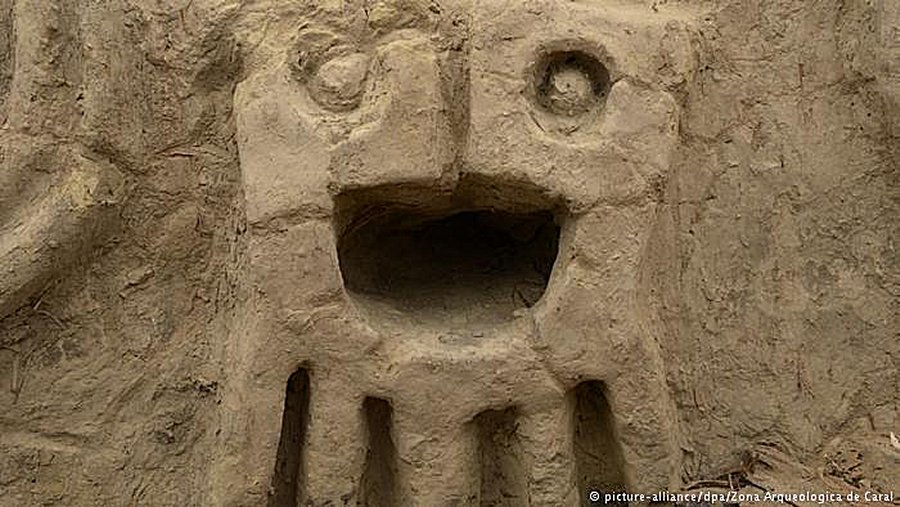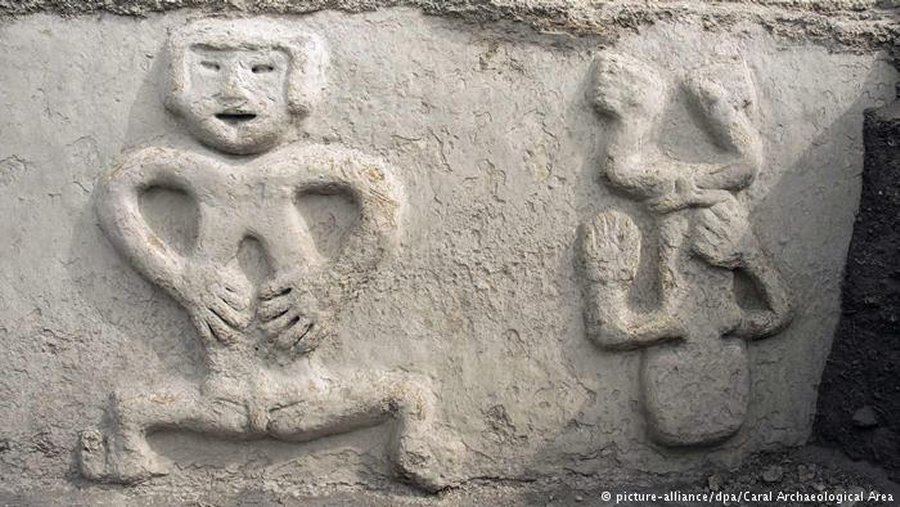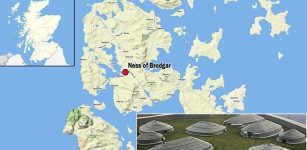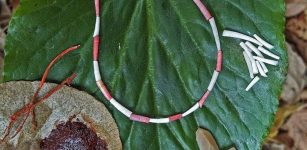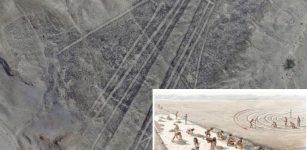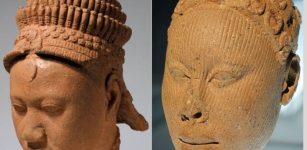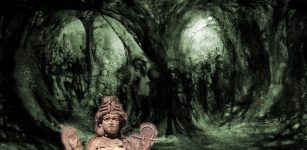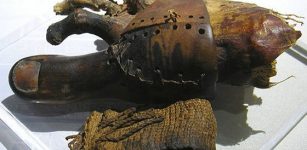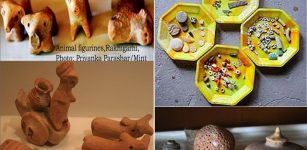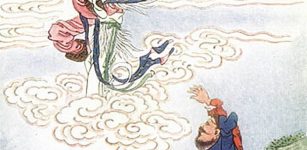3,800-Year-Old Wall Relief Created By Ancient Caral People Unearthed In Peru
Conny Waters - AncientPages.com - An ancient wall relief in Peru, belonging to the oldest civilizations in the Americas, has been unearthed at the ancient Caral site of Vichama in Peru’s central coastal region, reports DW News.
Caral relief, Vichama, Peru. The snakes represent a water deity that lands on a humanoid seed
The wall is approximately 3,800 years old and depicts snakes and human heads carved into an adobe wall. One meter (3.2 feet) high and 2.8 meters long, the wall relief was discovered in the sea-side archaeological site of Vichama, 110 kilometers (68 miles) north of Peru's capital, Lima.
Archaeologist Ruth Shady Solís, director of the Caral excavations, informed the relief was most probably created towards the end of a drought and famine that the Caral civilization experienced.
Other reliefs discovered nearby showed emaciated humans.
The relief was likely done towards the end of a drought and famine that the Caral civilization experienced
Shady Solis believes the serpents represent a water deity that irrigates the earth and makes seeds grow. The Vichama site is one of the excavation points of the recently discovered Caral civilization, also known as Norte Chico, and has been explored by archaeologists since 2007.
The Caral civilization is 5,000 years old, making it the oldest civilization in the Americas, and flourished at the same time as the thriving Mesopotamian, Egyptian and Chinese civilizations. The Caral people lived in the Supe Valley along the north-central coast of Peru.
Vichama that dates back to 1800 and 3500 BC is thought to have been a fishing community and one of the Caral peoples' various cities. The wall, made of a clay-like material (adobe) and was placed at the entry point of a ceremonial hall.
The wall is approximately 3,800 years old and portrays snakes and human heads.
The wall relief shows four human heads, side by side, their eyes closed, with two snakes passing between and around them. The snakes point their heads to what appears to be a humanoid seed symbol that is digging into the soil.
According to archaeologists the ancient relief from the Vichama site may have been created during the difficult time of climate change and serious water shortage, which had an enormous, devastating impact on the Caral people’s agricultural production.
The Caral excavation site has so far unearthed the ruins of 22 buildings in a 25-hectare space, dating back to between 1800 and 1500 B.C.
Written by Conny Waters - AncientPages.com Staff Writer


